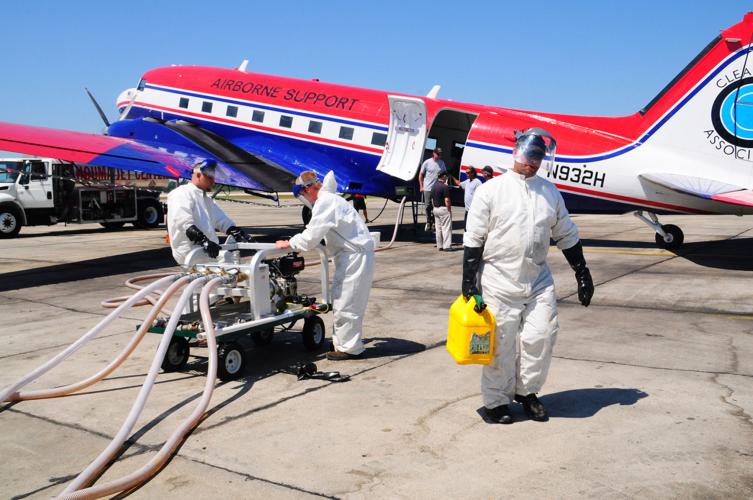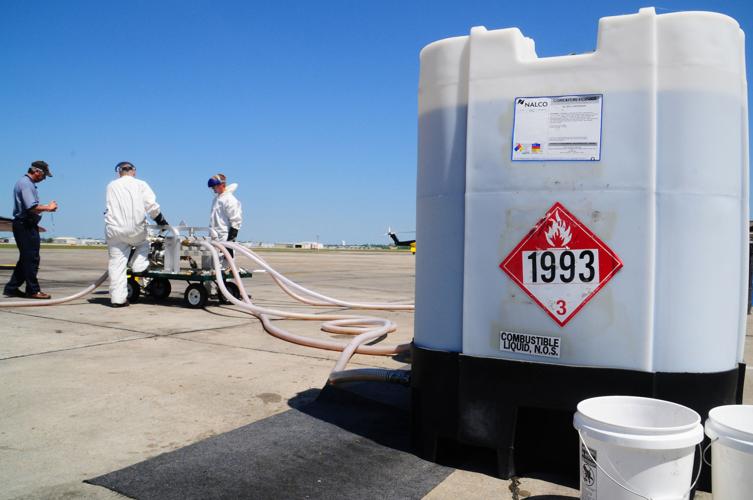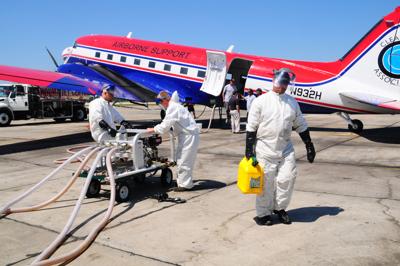A federal judge has ordered President Donald Trump's administration to update its oil spill response plans and potentially limit the use of the chemical dispersants that were heavily used during the BP Deepwater Horizon oil disaster.
In a ruling on Tuesday, U.S. District Court Judge William Orrick of the Northern District of California agreed with environmental groups that the Clean Water Act requires the U.S. Environmental Protection Agency to maintain spill response plans that reflect current science. Over the past three years, a flood of new research has blamed dispersants for a host of environmental and human health problems, including lingering effects from the BP disaster a decade ago.
“Judge Orrick’s ruling is a game-changer,” said Claudia Polsky, director of the University of California-Berkeley Environmental Law Clinic, which filed a lawsuit in January that argued federal rules on dispersant use were lax and outdated. “This is the first time a court has addressed whether EPA has a duty to keep the cleanup plans current and effective. The court said ‘yes.’”

An air plane releases oil dispersant over an oil discharged from the Deepwater Horizon rig on May 5, 2010.
Orrick also denied a motion by the American Petroleum Institute to intervene in support of the EPA. In court filings, the institute had argued that the EPA might not sufficiently represent oil industry interests.
On Wednesday, an EPA spokesman said the agency is still reviewing the decision but declined to comment further.
The UC Environmental Law Clinic filed the lawsuit on behalf of several groups and individuals who say people and the environment were harmed by dispersants in Louisiana and Alaska during the Deepwater Horizon and 1989 Exxon Valdez oil disasters.
Plaintiffs include Plaquemines Parish commercial fisher Kindra Arnesen, Earth Island Institute, Alaska Community Action on Toxics and the Center for Biological Diversity.
Rather than clean up oil, dispersants break it into droplets that more easily mix with water. Dispersants have been used during 27 spills in the U.S. over the past 40 years, and most of those were in the Gulf of Mexico, according to the National Oceanic and Atmospheric Administration.

Oil dispersant was pumped from tanks into a plane in Houma on May 5, 2010. The dispersant was then dropped across oil from the BP Deepwater Horizon oil disaster.
Dispersants were sprayed from helicopters during the Valdez disaster, which blanketed parts of the Alaska coast with 11 million gallons of oil.
During the Deepwater Horizon disaster, nearly 1 million gallons of dispersant was sprayed by air, and another 770,000 gallons were injected into the damaged wellhead on the sea bottom. The well released about 134 million gallons of oil over 87 days.
Dispersants haven’t been used in U.S. waters since then, according to NOAA.
Recent studies -- many of them funded with settlement money from BP -- have indicated dispersants caused lung irritation, rashes, nausea and other illness in U.S. Coast Guard members and other Deepwater Horizon responders. They also cause problems for fish, deep-sea coral and other marine life. Dispersants can kill or inhibit the growth of oil-eating microbes, weakening nature’s ability to cleanup spills.

Coast Guard crew members from the cutter Harry Claiborne pull an oil-covered boom from the Gulf of Mexico during the 2010 BP Deepwater Horizon oil disaster.
Research also indicates that dispersants can have the unintended effect of transforming oil into a toxic mist able to travel for miles and penetrate deep into human lungs.
Arnesen, whose family fishes for Gulf shrimp, crab and reef fish, said she has suffered from respiratory problems and headaches years after exposure to dispersants while aboard a boat in Barataria Bay, an area hard-hit by the spill.
“Dispersant is nasty stuff to deal with,” she told The Times-Picayune before the suit was filed. “You learn to live sick.”

Oil on the water's surface at the site of the BP Deepwater Horizon disaster on Tuesday, May 18, 2010.
Despite the range of concerns, a 2019 National Academies of Sciences report stressed that dispersants should still remain a tool for halting the spread of oil on the water’s surface and along shorelines. Oil companies and other response managers should use an expanded and refined series of analysis tools to weigh the trade-offs of dispersants against other options, according to the report.
But the EPA has resisted incorporating information on those trade-offs in its spill response plan. While the EPA is required by the Clean Water Act to periodically review and update its plan, the agency hasn’t done so since 1994.
“This is a prime example of government-industry complacency,” said Riki Ott, an Earth Island Institute marine toxicologist.
Offshore oil drilling is inherently risky and should be phased out, said Kristen Monsell, legal director for the Center for Biological Diversity. “But while it continues, we need smarter spill responses that don’t defer to the oil industry.”
For thousands of Coast Guard members who responded to the 2010 BP Deepwater Horizon disaster, the dangers were clear -- an oil platform in fla…
Timmy Couvillion knew the leak from the toppled Taylor Energy oil platform was bad. For 15 years, the platform’s damaged wells had sent up an …








